In the 1970s the Philadelphia skyline was on the rise, with bulky new office towers being constructed throughout Center City. At this time, the “Gentlemen’s Agreement” was untouched, as every structure stood below the height of the statue of William Penn at the top of City Hall. New high-rises were adding substantial amounts of office space and dominated the previous structures that stood out in the skyline, and featured various designs with stone, metal, and glass cladding. Philadelphia YIMBY presents massing renderings of the skyline as it stood in 1975, when Brutalist architecture dominated much of the financial district, including the area around City Hall.

Philadelphia skyline 1975 looking south. Image and models by Thomas Koloski
In the visuals, both PSFS Building and City Hall appear prominently as they top the skyline with the 303-foot antenna and 37-foot tall statue. Both prewar structures stand to the east of where most of the new developments of the period had risen, which stand to the west of the older commercial district that includes structures such as The Drake at 1525 Spruce Street and the building now known as the Aria at 1425 Locust Street. The towers that were constructed during this time frame feature mixtures of metal, stone, and glass that makes the 1970s architecture feature prominently on the skyline to this day.

Philadelphia skyline 1975 looking southwest. Image and models by Thomas Koloski

Philadelphia skyline 1975 looking northwest. Image and models by Thomas Koloski
In 1971, the same year Veterans Stadium had opened, the 384-foot tall PECO Building became the first tower of the decade to make a mark on the skyline. 1601 Market Street followed shortly after as it had risen closer to City Hall at 490 feet, with 1845 Walnut Street and One Meridian Plaza rising in 1972 and the two Centre Square towers rising in 1973 with the Clothespin sculpture by Claes Oldenberg in front of the complex on Market Street. 2000 Market Street was also constructed in the same year with dark metal and glass standing 435 feet high. Two years later, two more towers had risen in the skyline as the 500 foot 1818 Market Street had been constructed in the previous year and the 384 foot 1650 Arch Street had finished construction in 1975.

Philadelphia skyline 1975 looking northeast. Image and models by Thomas Koloski
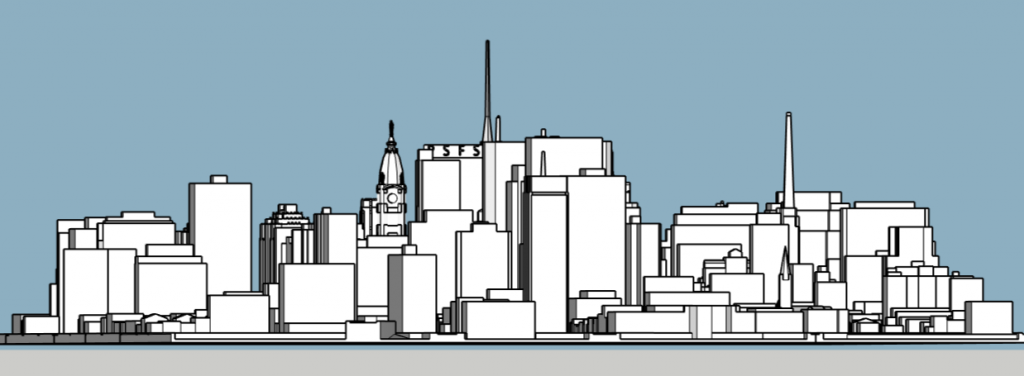
Philadelphia skyline 1975 looking east. Image and models by Thomas Koloski
Subscribe to YIMBY’s daily e-mail
Follow YIMBYgram for real-time photo updates
Like YIMBY on Facebook
Follow YIMBY’s Twitter for the latest in YIMBYnews


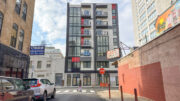
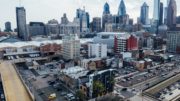
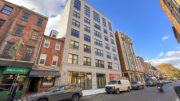
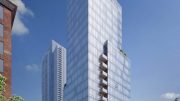
The Stars and Stripes were painted on every crosswalk along Market Street, from City Hall to the east.
East Market Street had concrete islands with poles and chains.
I used to enjoy breakfast at the McDonald’s at 13th & Market streets.
The Gallery at Market east was half the size before the renovation that practically doubled its size a decade later.
The Broad Street line had those orange subway cars rolling along.
The Market-Frankford line had the Almond Joy subway cars with rooftop fans (no air conditioning).
Just a few years before the Philadelphia Phillies won the World Series in 1980.
Septa transit fare was 45¢ and a transfer was 5¢.
We enjoyed our annual Super Sunday event every autumn along the length of the Benjamin Franklin Parkway with delicious foods, carnival rides & games.
Philadelphia was a fun city back then and I was lucky enough to experience it. 🙂
Sounds dreadful
Of course, that 45 cent SEPTA fare in 1975 translates to about $2.25 today, adjusted for inflation. Not really that much cheaper than the current $2.50.
I think it sounds lovely. Like a vibrant city should be.